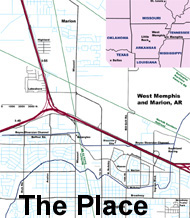
 |
 |
 |
 |
 |
 |
 |
![]()
| The Injuries. Each of the three victims had many wounds. The terms used in the autopsy to identify these injuries were (layman's description in parentheses):
There were 146 specified injuries, 90 of these measured. Other times in the autopsy the terms "multiple," "multiple confluent," "extensive multiple," "group," "few," or an unenumerated plural (e.g. cuts) were used. This makes this enumeration inexact. Below is an accounting of the wounds as described in the autopsy. Summary of the autopsy results. Wounds that involve striking or scraping:
the sticks that were entered into evidence as potential weapons a 2 x 4 piece of wood baseball bat - (noted it would have a different but similar pattern) rolling pin the flat part of shovel hundreds of items a broom handle a mop handle the shovel handle a jack handle a flashlight a tire iron hundreds of items located in almost any household (reiterated and expanded from above) Items that Peretti said could have caused the cuts. Ford: - So, most serrated knives could cause this injury? Most serrated - Peretti: - No, I think we can rule out a butterknife ok, a serrated butterknife. Injuries as related to victim. Michael Moore received 63 specified injuries (along with plural terms used 17 times), Christopher Byers 62 (along with plural terms used 18 times) and Steve Branch 21 (along with plural terms used 20 times). Moore had 34 specified injuries on his right side and 19 on his left. In contrast, Byers had 16 on his right and 36 on his left and Branch had 7 on his right side and 11 on his left. (Not including multiple and plural terms. Many injuries were not specified as to which side of the body they were on.) Moore had extensive skull fractures (ten) and almost all of his injuries were on the upper body. He had defensive injuries. Christopher Byers had many injuries on his lower body (24) in contrast to five for Moore and six for Branch. One mention is made of a microscopic examination revealing bacterial colonies, that of Chris Byer's penis. Chris Byers had two old scars on his face, one on his chest and "a few" on his lower extremities. The other two children had no old scars. Injuries change color over time, the rough order being, red, black/blue or purple, green, yellow and then ultimately resolution. The time given to progress through these colors varies among text books, with red immediate and yellow taking days. The term "yellow" without a modifier is used twice for specified injuries and once for multiple injuries on Chris Byers lower extremities. Yellow is not used to describe any of Moore's injuries and describes a scratch on Branch's thigh. This suggests that these injuries were the earliest or took place at a time before the murders. |
![]()
|
Copyright © 2008 Martin David Hill
|